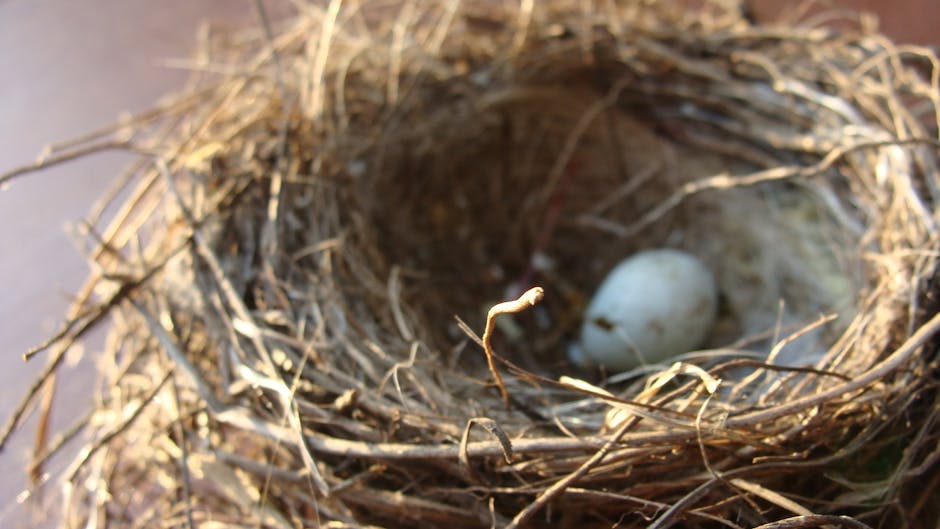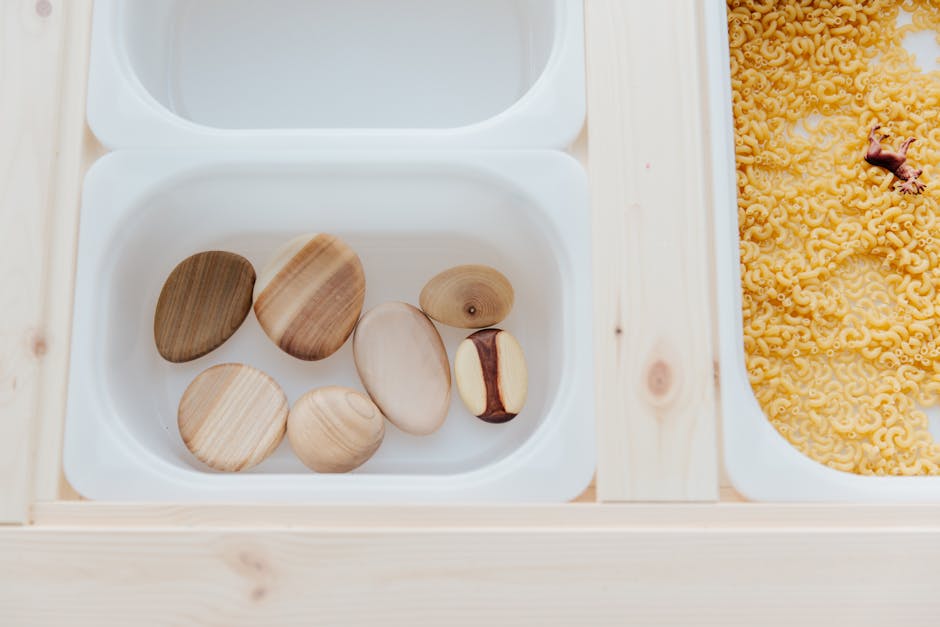Introduction: The Remarkable Process of Bird Egg Fertilization

Bird egg fertilization marks the beginning of new life within the avian world, unfolding a captivating journey of reproduction. By understanding the intricacies of this process, we gain valuable insights into the fascinating world of avian reproduction.
Anatomy of Bird Reproduction
Birds have a unique reproductive system adapted for egg-laying and fertilization, with specialized organs playing crucial roles in the development of their offspring.
Overview of Bird Anatomy
Birds possess specialized reproductive organs located in their abdominal cavity, contributing to the reproduction and development of their offspring.
Male and Female Reproductive Organs
Male Reproductive Organs:
Birds have distinct male reproductive organs responsible for sperm production and delivery:
- Testes: Located inside the bird’s body, the testes produce sperm.
- Vas deferens: Tubes that transport sperm from the testes to the cloaca, a common opening for reproductive, excretory, and digestive systems.
- Cloaca: The site of sperm and semen release during mating.
Female Reproductive Organs:
Female birds possess specialized reproductive organs essential for egg production and fertilization:
- Ovaries: Primary female reproductive organs responsible for producing eggs.
- Oviducts: Tubes where fertilization occurs, and eggs develop and receive necessary nutrients. The oviduct consists of several sections:
- Infundibulum: The site of fertilization.
- Magnum: Adds albumen (egg white) to the developing egg.
- Isthmus: Forms the shell membrane.
- Uterus: Adds the shell to the egg.
- Vagina: Lays the egg through the cloaca.
Role of Hormones in Egg Fertilization
Hormones play a vital role in bird egg fertilization, regulating various aspects of reproduction, including egg development and reproductive behaviors.
- Estrogen: Stimulates the growth and development of female reproductive organs and egg production.
- Progesterone: Prepares the uterus for eggshell formation.
- Testosterone: Influences the development and function of male reproductive organs and sperm production.
Understanding the anatomy of bird reproduction and the role of hormones deepens our appreciation for the intricate process of egg fertilization in these remarkable creatures.
Fertilization Process
Egg Formation
Birds have a specialized reproductive system where eggs are formed within the female bird’s body. The process begins with the development of follicles in the ovary. Each follicle contains an immature egg cell called an oocyte. The oocyte goes through growth stages, accumulating nutrients and forming a protective layer called the vitelline membrane. Eventually, the mature oocyte is released from the ovary and enters the oviduct.
Sperm Transfer and Fusion
For fertilization to occur, the female bird mates with a male bird. During mating, the male transfers sperm from his cloaca to the female’s cloaca through a process called the “cloacal kiss.” The transferred sperm migrates towards the oviduct, where the mature egg is located. Fertilization happens when a sperm cell successfully penetrates and fuses with the egg cell in the infundibulum.
Development of the Embryo
Following fertilization, the resulting zygote begins to divide rapidly. It forms a blastodisc, a small disc-shaped structure containing the genetic material necessary for embryo development. The blastodisc develops into an embryo within the yolk, which provides necessary nutrients.
During this stage, various structures and organs start to form, including the neural tube for the bird’s nervous system and the beating heart. The embryo grows until it is ready to hatch.
Understanding the fertilization process is crucial for comprehending the journey from egg formation to the development of a fully functional embryo.
Egg Laying and Incubation
Egg laying and incubation are critical stages in bird reproduction.
Timing of Egg Laying
The timing of egg laying varies among bird species and is influenced by internal and external factors. Environmental conditions, food availability, and breeding behaviors play a role. Many bird species lay eggs during spring or summer, characterized by favorable weather and abundant food. However, some species have specific breeding seasons at different times of the year. The timing of egg laying may coincide with nesting sites, hatching times of food sources, or migration patterns.
Incubation Period
The incubation period refers to the time it takes for eggs to develop and hatch. It varies across bird species. Factors such as egg size, metabolic rate of parents, and environmental conditions affect the duration. For example, a chicken egg hatches in around 21 days, while an ostrich egg may require 42 to 50 days.
Role of Parents in Egg Incubation
In most bird species, both male and female individuals contribute to incubation. Some species have unique arrangements. For instance, male emperor penguins incubate the eggs, enduring extreme conditions. In other cases, both parents share the duties, taking turns to maintain an optimal temperature. Parental roles also include protecting the eggs from predators, maintaining the nest structure, and providing essential nutrients.
Understanding the timing of egg laying, incubation period, and parental roles provides insights into the behaviors and adaptations of birds during this crucial stage of reproduction.
Nutrition and Development of the Chick

The nutrition and development of a chick are crucial for its growth and well-being. During incubation, the developing chick relies on the yolk of the egg as its primary source of nutrition.
Nutritional Needs of the Developing Chick
The yolk is rich in proteins, fats, vitamins, and minerals, providing essential nutrients for the chick’s growth, metabolism, and tissue formation. As the chick develops, it absorbs these nutrients through the yolk sac, which gradually diminishes in size until it detaches shortly before hatching.
The yolk sustains the chick until it hatches and begins to feed independently. After hatching, the chick’s nutritional requirements shift, and it relies on external food sources for further growth and development.
Impact of Environment on Chick Development
The environment in which the egg is incubated plays a critical role in chick development. Optimal temperature and humidity conditions create an environment conducive to proper embryonic development, supporting the growth of organs, feathers, and skeletal development.
Maintaining appropriate temperature and humidity levels throughout the incubation period is vital for the healthy development of the chick. Other environmental factors, such as nest quality and protection from predators, also contribute to the chick’s well-being.
Parental care, including nest construction and incubation, creates a suitable environment for the chick’s development. The parents’ actions ensure nest stability, temperature regulation, and protection from external threats, ultimately influencing the successful development of the chick inside the egg.
In conclusion, the nutrition and development of a chick are closely tied to the contents of the egg and the environmental conditions during incubation. The yolk provides vital nutrients, while the environment significantly impacts the chick’s development. Understanding these factors is crucial for ensuring the successful hatching and healthy growth of bird offspring.
Conclusion: Summary of Egg Fertilization
Understanding the process of bird egg fertilization provides valuable insights into the world of avian reproduction. Throughout this article, we explored the intricate steps involved in this remarkable biological event. Here is a summary of the key points:
-
Bird egg fertilization occurs when a sperm cell from the male bird combines with an egg cell from the female bird.
-
Courtship behaviors and mating rituals play a vital role in bird reproduction.
-
Copulation allows the male bird to transfer sperm into the female’s reproductive tract, leading to internal fertilization.
-
After fertilization, the egg develops into an embryo through cell division.
-
The timing of egg laying and incubation period varies among bird species.
-
Parents actively participate in egg incubation to ensure optimal conditions for the embryo’s development.
-
Adequate nutrition and a suitable environment are crucial for the healthy growth of the developing chick.
Bird egg fertilization is a complex and awe-inspiring process that involves various reproductive mechanisms. From courtship rituals and copulation to internal fertilization and embryo development, each step contributes to the successful reproduction and survival of avian species.
Takeaways: Key Points of Egg Fertilization

To recap, here are the key takeaways regarding bird egg fertilization:
- Fertilization occurs when a sperm cell merges with an egg cell.
- Both male and female birds play essential roles in the fertilization process.
- Courtship behaviors and mating rituals are significant aspects of bird reproduction.
- Copulation allows the transfer of sperm into the female’s reproductive tract.
- Bird eggs are fertilized internally within the female bird’s oviduct.
- After fertilization, the egg develops into an embryo through cell division.
- The timing of egg laying and incubation period vary among bird species.
- Parents actively participate in egg incubation for proper embryo development.
- Adequate nutrition and a suitable environment are crucial for the healthy growth of the developing chick.
By delving into the intricacies of bird egg fertilization, we gain a deeper appreciation for the marvels of avian reproduction and the remarkable journey from fertilization to the hatching of new life.
Takeaways: Key Points of Bird Egg Fertilization
In this blog post, we explored the fascinating process of bird egg fertilization. Here are the key points to remember:
Fertilization Process
- Fertilization is the union of a sperm cell and an egg cell, resulting in the formation of a zygote.
- Courtship behavior and mating rituals establish pair bonds and synchronization between male and female birds.
- Male birds transfer sperm to the female’s cloaca during mating.
Internal Fertilization
- Birds have internal fertilization, where sperm and egg cells meet inside the female’s body.
- After mating, the sperm travels from the cloaca to the female’s oviduct for fertilization.
Ovulation and Egg Formation
- Female birds have a pair of ovaries, with the left ovary usually being functional.
- The ovary produces eggs in various stages of development.
- During the ovulation cycle, a mature egg is released from the ovary into the infundibulum, the first part of the oviduct.
Egg Laying and Incubation
- Egg laying is timed to optimize environmental conditions for incubation and chick development.
- The incubation period varies among bird species but involves keeping the eggs warm until they hatch.
- Both male and female birds may participate in egg incubation, with some species sharing the responsibility equally.
Nutrition and Development of the Chick
- Developing chicks have specific nutritional needs to support their growth and development.
- The environment plays a crucial role in chick development, influencing factors such as temperature, humidity, and resource availability.
In conclusion, bird egg fertilization is a complex process that involves courtship, internal fertilization, and the subsequent development of the embryo. Understanding these key aspects deepens our appreciation for the remarkable reproductive strategies of avian species.
Remember these takeaways as you marvel at the wonders of bird reproduction and the intricate journey from egg to chick.
Word Count: 297 words
Frequently Asked Questions
FAQ: How Do Bird Eggs Get Fertilized?
Q1: How do birds fertilize their eggs?
A1: Birds fertilize their eggs through internal fertilization. During mating, the male bird transfers sperm to the female’s reproductive tract, where it travels to the oviduct to meet the mature egg.
Q2: What is the role of courtship in bird egg fertilization?
A2: Courtship behaviors and mating rituals are crucial in bird reproduction. They establish pair bonds, synchronize breeding between male and female birds, and ensure successful copulation for fertilization to occur.
Q3: Where does fertilization take place in the female bird’s body?
A3: Fertilization takes place in the infundibulum, the first part of the female bird’s oviduct. It is in the infundibulum that the mature egg and sperm meet, resulting in fertilization.
Q4: Do both male and female birds participate in incubating the eggs?
A4: In many bird species, both male and female birds participate in incubating the eggs. Some species have unique arrangements, such as male emperor penguins incubating the eggs, while others share the responsibility equally.
Q5: How long does it take for a bird egg to be fertilized and develop into a chick?
A5: After fertilization, the development of a bird embryo varies among species. Factors such as egg size and environmental conditions influence the incubation period, which can range from a few weeks to several months.
Word Count: 183 words

Leave a Reply